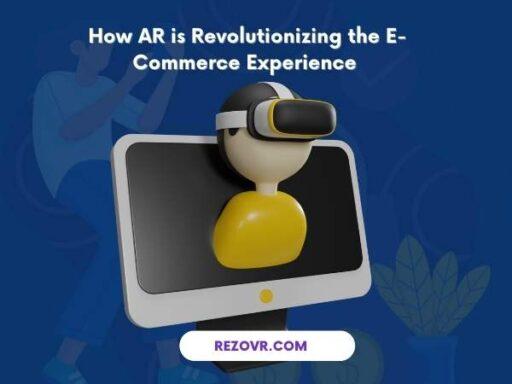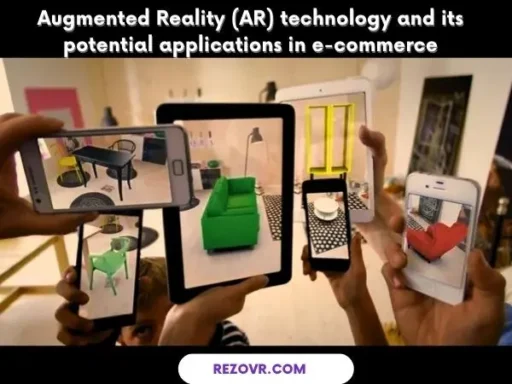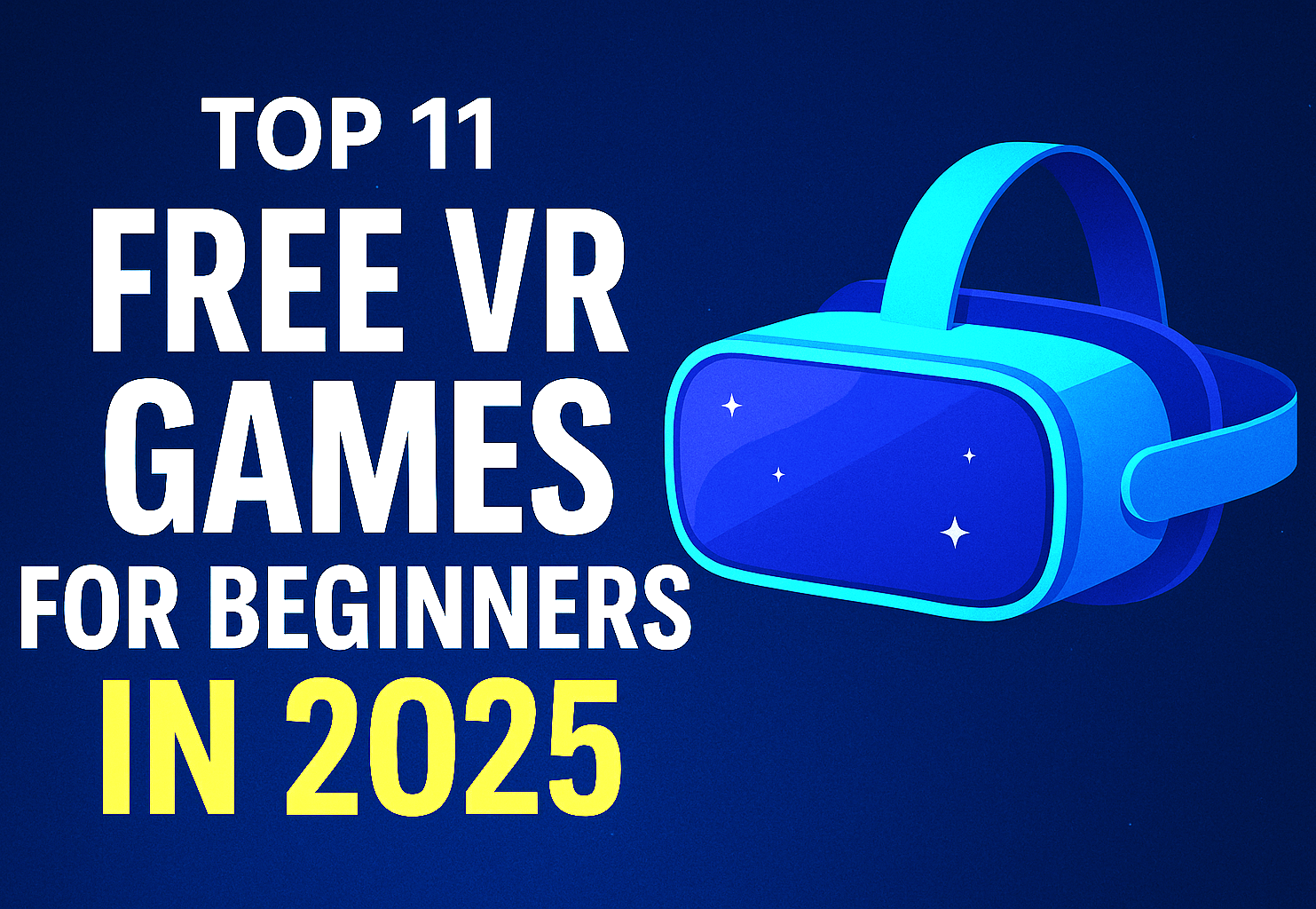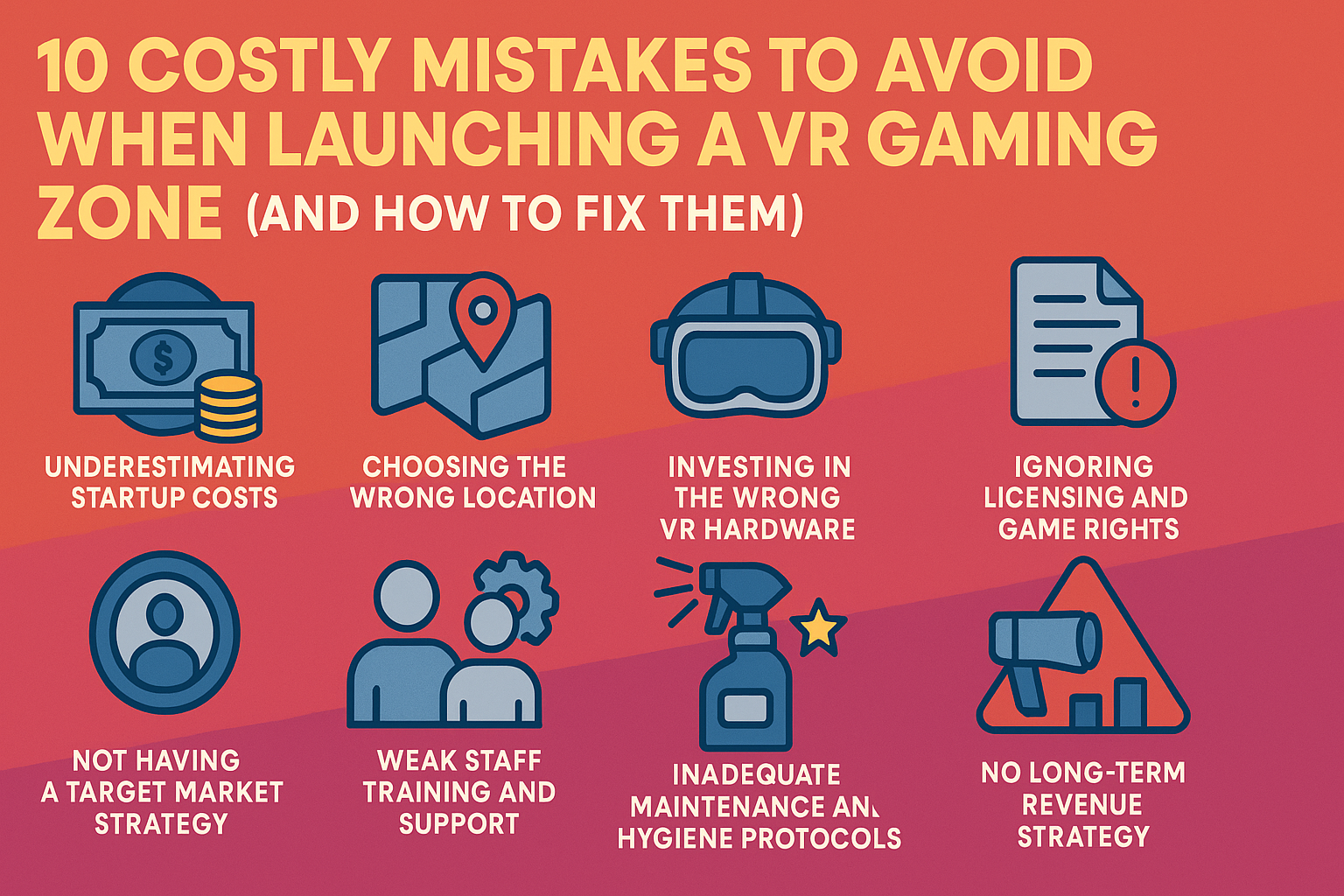In recent years, Augmented Reality (AR) has gained significant attention in various industries, including healthcare, education, entertainment, and Manufacturing. AR has also revolutionised the e-commerce industry, offering customers an immersive and engaging way to interact with products before purchasing.
AR integration in e-commerce has bridged the gap between offline and online shopping experiences, giving customers a realistic view of products in their natural environment. In this blog, we will discuss the benefits of AR in e-commerce and how it can be implemented in five different ways. We will also explore the future of AR in e-commerce and how it will transform the online shopping experience.


What is Augmented Reality?
Augmented Reality (AR) is a three-dimensional (3D) Interactive Experience. In simple terms, augmented Reality is a digitally enhanced version of the physical world. AR integrates digital information into the user’s environment in real-time.
AR also allows users to interact with digital objects in the physical environment. It has various applications in various industries, such as healthcare, education, entertainment, and Manufacturing.
AR apps use GPS to track a user’s position and display relevant information. Through a smartphone’s camera, people can see what the app sees. A building’s floor plan might appear on their phone if they point their camera at it. If they point it at a restaurant menu, they might see a list of items.
You can scan QR codes on store shelves to access product information. After learning more about it, shoppers can try clothes and shoes before purchasing them. How awesome is that?
Augmented Reality (AR) technology and its potential applications in e-commerce
E-commerce companies increasingly utilise Augmented Reality (AR) to interact with customers in three dimensions on mobile devices and other displays. This transforms the customer journey into a 360-degree immersive visual experience. By adding value at every stage of the customer journey, AR strengthens the relationship between brands and customers.


The integration of AR into e-commerce helps to bridge the gap between offline and online shopping experiences by providing customers with an engaging and immersive way to interact with products before purchasing. Customers can view the product in its natural environment, allowing them to better understand its size, shape, and colour. This, in turn, helps customers make informed decisions about their purchases, resulting in fewer product returns.
To implement AR effectively in e-commerce, brands should adopt 3D visualization, 3D product imaging, and AI analytics tools to create a customer-centric shopping experience. Here are five ways to apply AR integration to your e-commerce business.
1: Virtual try-on
In AR, customers can try on an item virtually on their electronic devices before purchasing it from an online store. The realistic representation of merchandise enables buyers to make an informed decision while buying a product from an eCommerce store.
Optical retail chain Lenskart allows customers to try on different frames using 3D technology. The 3D try-on option allows Lenskart customers to try various looks on other structures and find the right fit without visiting a physical store.
2: AR-enabled manuals
One of the areas that customers focus on when shopping online is reading product manuals and reviews carefully to avoid the hassle of returns and exchanges. AR gives buyers a better understanding of products, which allows them to make quick, informed online shopping decisions.
A classic example of an AR manual is the AR app from Mercedes-Benz, which guides users through the equipment of their luxury car.
3: Product preview and launch
Augmented Reality allows buyers to imagine a product’s appearance when placed in their home or office. This AR trend will revolutionize the furniture and home decor industry. It gives customers a real-time and 360-degree view of the product in a simulated environment, increasing customer satisfaction and reducing returns.
IKEA is one of them. It has an augmented reality app allows users to measure home furniture and decorations. This avoids purchasing a product that later does not fit in the specified slot.
4: Augmented reality filters
Allow consumers to test products from the comfort of their homes, reducing damages caused by manipulation. We’ll show you this visual example:
Warby Parker, a glasses and sunglasses company, developed an augmented reality app to let clients try on their products.
Advantages of AR in E-Commerce
In a 2019 survey conducted by the National Retail Federation, it was found that three out of five respondents felt that the latest retail innovations had improved their shopping experience (NRF, 2019). Although virtual reality (VR) and augmented reality (AR) cannot replace the human touch, they can certainly enhance the online shopping experience. Using these technologies, customers can enter a virtual showroom or try out a product through an app from their homes. This creates a sense of confidence that they will love what they are buying, ultimately improving their overall shopping experience.
Bridging the gap between physical and online stores
VR and AR create a common ground between brick-and-mortar and online stores, combining the best of both worlds and offering what many call “v-commerce”. Here, the boundaries of time and space disappear, replaced by an innovative shopping experience.
Great range and accessibility
Web and mobile VR and AR applications allow you to reach farther than brick-and-mortar stores. Shoppers can access the entire product catalogue with a simple tap or tap. Businesses need to remember the pain caused by multiple channels and run an omnichannel store where customers can shop from anywhere.
Increased time spent online
When someone walks into a store they love, do they spend hours trying out products? The same happens when customers visit an online store via VR or AR. They allow themselves to be attracted by the entire product portfolio with its options for testing and interaction, which can significantly increase their navigation time.
Customer Loyalty
Of course, customer retention is the most important thing when implementing a VR or AR strategy. The ability to try products anytime anywhere reduces tension between online shopping and consumers. Personalized Experience + Buying Confidence = Satisfied and Loyal Customers.
The Future of AR in the E-commerce Shopping Experience
The competitive industry of e-commerce is rapidly developing with the development of AR technology. According to a Statista report, the AR market will reach nearly $300 billion by 2024. In the future, we look forward to newer and more immersive digital experiences using this advanced technology. Experts also speculate that virtual Reality will take over an offline business and redefine the online shopping experience forever.
How AR creates personalized shopping experiences for customers.
Augmented Reality (AR) technology has revolutionized the retail industry by providing customers with a personalized shopping experience. AR enables retailers to create virtual fitting rooms and digital displays that allow shoppers to interact with products in a particular environment.
Customers can use their smartphones or tablets to access AR-enabled apps overlaying product information, such as price comparisons, customer ratings, or colour options, over authentic images. In this way, they get an experience to their preferences, increasing satisfaction and allowing them to make confident purchases anytime, anywhere.
Companies that have successfully implemented AR in their e-commerce strategies.
Following are the companies that have successfully implemented AR in their e-commerce strategies.
1) Amazon:
Amazon is one of the earliest companies in innovation and mobile sales. It’s one of the most popular E-commerce apps on the market today. Amazon has revolutionized how people shop, making it easier and more convenient. Their mobile app is user-friendly and provides a range of features, from product reviews to order tracking. Amazon has set the standard for e-commerce companies worldwide. Beyond that, the company has been working to grow its mobile commerce platform. These days, around 42 % of Amazon’s smartphone visits originate from its smartphone app. The rest is made up of people visiting the website.
2) IKEA:
The company launched a free application – IKEA Place – in 2017 that integrated with its latest product catalogue. The application allowed users to identify their unique style through tests. Also, they can create augmented Reality to see what the furniture in their home will look like. The app was a success and increased IKEA sales. This is an innovative way to showcase their products interactively using augmented Reality. IKEA Place was praised by customers and industry experts, setting the benchmark for other retailers to use augmented Reality to showcase their products. It gave IKEA a competitive edge and helped them to stand out in the market.
3) L’Oréal:
Using augmented reality technology, L’Oréal’s ModiFace Experience provides users with a preview of makeup colours in their photos and videos. In addition, users could create a complete look using products available for purchase. Instead of trying on individual lipsticks, eyeshadows, foundations, and more, the app guesses which shade best suits a user’s skin tone. This is achieved using the latest augmented reality technology. The app also had a virtual makeup artist feature, which allowed users to get personalized advice from a professional artist. Additionally, it offered a ‘try-on-before-you-buy’ feature, allowing users to ‘try on’ products before purchasing.
4) Adidas
Think of how nice it would be if you could preview how a pair of shoes would look on your feet and how they would look while you’re walking or running. Adidas made this possible through augmented Reality with its iOS app. The app uses 3D scanning technology to map a user’s feet and apply the digital shoe. With this, the user can get a realistic view of the shoe’s appearance. This technology allows customers to understand better how the shoe fits and looks before they purchase it. When the pandemic stopped in-store shopping in many places worldwide, consumers relied on this technology to inform their purchasing decisions.
5) Gucci
Gucci was one of the first luxury brands to allow shoppers to try on sneakers with AR. In digital marketing, this approach has proven to be very effective. After trying on the shoes, consumers can decide whether to buy them. Ultimately, this results in fewer returns and increased customer satisfaction. Many other luxury brands have since adopted this innovative approach to customer service. By offering an AR-based relevant experience, brands can differentiate themselves from competitors and increase customer satisfaction.
Challenges and Limitations of AR
1. Technical challenges
Organizations need several components to implement a fully functional augmented reality solution. AR application development follows the same process, but several technical challenges exist, such as Unity 3D, content, hardware, and public awareness. Organizations need to ensure that AR applications are secure and can be updated quickly. These are still areas that require significant improvement. We can’t deal with these problems once we can
Devices used in AR
AR apps can be run on any tablet or smartphone. AR apps are even omnipresent. A few key components cause it to lag, including cameras, screens, motion sensors, processors, and high-speed internet connectivity.
If we assume we have everything, let’s take a moment to think about it. What about other hardware such as Google Glass, HoloLens, AR headsets, and Meta? A broader audience needs to be introduced to Augmented Reality to enjoy its delights and thrilling experiences.
3. Content for AR is not accessible.
You own a smartphone but do not have any apps to use. How will you feel? Yes, this is the same situation with Augmented Reality these days. We might get hardware like HoloLens and Google Glass soon, but what about the content and AR applications that will provide the user with this unique Experience? There is a massive demand for such interactive content, and companies are still creating and generating such highly engaging content regularly.
- The AR ecosystem is growing rapidly, but due to the lack of interactive content, people need to be more motivated to adopt this new technology.
4. Lack of public awareness
This is more of a social challenge. When a new technology is released, it takes time to attract users. The same applies to AR (Augmented Reality).
The average person still needs to understand the potential of AR, so it’s not even accessible to them in their daily lives. Therefore, AR is still developing. It will take time for it to be entirely accepted by the public.
Future of AR in E-Commerce
Experts say the AR industry will be worth $25 billion by 2025 and will continue to grow. Investing in AR is an excellent idea if you want to invest your money in something safe! It could help doctors during surgery or show patients their internal structures. And it helps buy a house or play a game with cool effects.
It can show you what a house will look like as your new home, or you can sleep on that overpriced jacket without even leaving your bed.
Not to mention improved indoor and outdoor navigation. Let’s remember the main innovation, the smart glasses that display the answers as you write the test or exam.
However, AR is still developing rapidly. With more and more people doing this work and billions of dollars invested by companies like Facebook, this industry will become a multi-billion dollar. With the development of smart glasses, AR will be the next big thing.
Conclusion
This article has given you a summarised view of Augmented Reality and its benefits & future applications. If you found this article interesting and would like to discuss AR, share your thoughts and experiences with AR in e-commerce.








